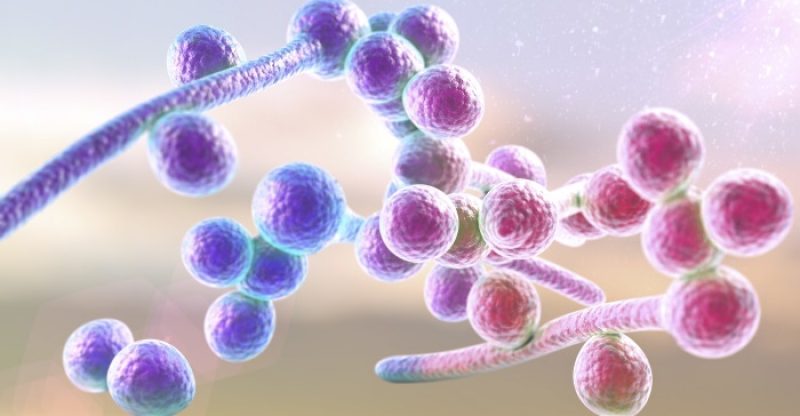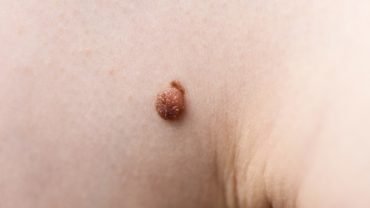Candida Symptoms, Causes, Treatments and Remedies
A common fungal infection, known as candida, is responsible for a wide variety of health issues.
If you are experiencing cravings for sweet foods, exhaustion, brain fog, a white coating on your tongue, pain in your joints, or a loss of your sex drive, you could be suffering from this fungal overgrowth.
These and other symptoms are common with Candida, and you can learn how to prevent this common infection, as well as how to avoid the infection, by reading our guide.
We’ll help you understand everything you need to know, as well as provide you with natural treatments you can use at home to clear up this type of infection.
Understanding Candida
You usually have many different types of yeast, both on the outside and inside of your body.
In most cases, these yeasts are benign or even helpful organisms that assist your body with daily and necessary functions.
In some cases, though, a specific strain of yeast, known as Candida albicans, can cause problems.
The most common locations for Candida albicans, and thus common areas for infection, include the intestinal tract, mouth, and vagina.
Because the majority of people always have Candida on and inside of them, it may seem odd that a part of your body can suddenly cause an infection.
When your immune system is healthy and working correctly, it controls the growth of Candida yeast, keeping it at optimal levels.
When your immune system is suppressed, or when conditions support overgrowth, this yeast can rapidly reproduce, resulting in an infection.
Nearly all Candida albicans infections are easily treatable, rarely severe, and go away quickly with proper treatment.
If you have other medical issues, though, that compromise your immune system, Candida infections can move throughout your body, causing infections in your heart, brain, and blood.
In fact, Candida albicans infection is one of the leading causes of sepsis and septic shock worldwide.
In these cases, more intensive intervention is necessary to cure the infection (1).
When at proper levels, Candida yeast is particularly helpful in aiding nutrient absorption and assisting with digestion.
Without it, your digestive system would not work as it should.
When factors cause your natural pH balance to shift, however, this invites Candida yeast to grow to unhealthy levels.
In the digestive system, Candida albicans overgrowth can cause damage to the lining of the gastrointestinal (GI) tract, which breaks down this protective barrier and allows compounds and particles to escape into the bloodstream.
In other areas of the body, such as the mouth and vagina, overgrowth of this yeast can cause other problems, as well.
The best steps toward fighting an overgrowth of Candida yeast is to keep your pH levels in balance and to support your immune system so that it can fight any possible infection.
Making sure you maintain healthy levels of good bacteria in your GI tract is also an excellent line of defense against Candida overgrowth (2).
While most cases of Candida overgrowth result in minor infection, there are instances where this yeast is difficult to eradicate, or when it causes serious health problems.
One example is Candida Overgrowth Syndrome (COS), which is a chronic disease wherein the Candida yeast becomes resistant to treatment.
In addition to typical Candida symptoms, people with COS also experience new and even extreme problems eating.
COS often results in intolerance, allergies, or sensitivities to various types of foods.
The most common are gluten, dairy, eggs, and corn, but some develop other food problems.
A more recent form of Candida, known as Candida auris, has developed in healthcare facilities.
Spread through contact with surfaces like bed rails and catheters, this type of Candida is also resistant to treatment, and can result in serious illness or even death.
Candida overgrowth in the mouth is common, especially in infants and toddlers, and is known as thrush.
Candida overgrowth in the vagina results in a vaginal yeast infection.
Candida overgrowth in the GI tract can cause a number of problems.
Causes of Candida Infections
Candidiasis, which is the infection that results from Candida yeast of any kind, has many causes.
Most involve creating the perfect environment in which Candida yeast can reproduce, or providing the fungus with optimal sources of fuel.
Many of these causes are easily preventable or treatable.
Below are the most common.
Taking Antibiotics
If you have an infection somewhere in your system, your doctor may prescribe a broad-spectrum antibiotic to knock out the offending microbes.
In addition to killing off any harmful bacteria in your body, though, antibiotics are also really effective at wiping out all the good bacteria, as well.
In addition to your digestive system relying on these bacteria for proper digestion, when these helpful bacteria are gone, nothing remains to help fight Candida yeast overgrowth in your body (3).
If you are taking a long course of antibiotics or multiple short courses, you are opening yourself up to possible candidiasis, because you are depriving your system of those much-needed bacteria.
Overuse of antibiotics is never a healthy choice, and this result is one reason you don’t want to take them unless absolutely necessary (4).
Using Inhaled Corticosteroids
Many different asthma treatments involve the use of inhaled corticosteroids.
These drugs have an effect on the mucous membranes of the mouth and throat, which create an environment conducive to candidiasis of the mouth, or thrush.
If you have asthma and use any of these medications to treat your disease, you should always rinse your mouth and throat after using an inhaled corticosteroid (5).
While treating this type of infection is fairly straightforward, it is best to prevent the overgrowth from occurring.
Taking Oral Contraceptives
The use of oral contraceptives disrupts the natural ebb and flow of estrogen levels in a woman’s body.
When you have a hormone imbalance of any kind, Candida albicans can overgrow, and you can wind up with a vaginal yeast infection.
As women age, estrogen levels rise normally, and when women over 35 are also taking oral contraception, this dominance of the estrogen hormone can lead to candidiasis.
Recent research indicates that taking oral contraception can double your risk of developing a candida overgrowth (6).
Treatments for Cancer
Similar to antibiotics, cancer treatments are designed to kill many invaders, not just tumors, and cancer cells.
Radiation and chemotherapy both can wipe out the healthy bacteria that keep Candida albicans naturally in check, and those undergoing these treatments can develop candidiasis, with as many as one-third experiencing it (7).
Compromised Immunity
If you have a weakened or compromised immune system, you are more susceptible to candidiasis.
This group includes the elderly, small children, infants, anyone with AIDS or HIV, those with other autoimmune or inflammatory conditions, and those in hospital settings for extended periods (8).
For individuals in these groups, the risk of developing a more serious form of candidiasis is also elevated.
Diabetes
When you have diabetes, whether Type 1 or 2, you have more sugar in your blood, mouth, and other mucous membranes than other people.
Yeast of all kinds, including Candida albicans, feed well on sugar, so those with elevated sugars are at a greater risk for not only candidiasis but also chronic COS.
Symptoms of Candida Overgrowth
It can sometimes be challenging to diagnose candidiasis because, depending on where the infection is, your symptoms may vary.
Symptoms of Candida overgrowth can also mirror those of other disorders, making it sometimes difficult to detect. Also, candidiasis can impact individuals differently.
Here, we offer frequent symptoms for various forms of Candida overgrowth, including those you are most likely to notice.
UTIs and Vaginal Yeast Infections
If you experience frequent or recurring vaginal yeast infections or urinary tract infections (UTIs), you may have stubborn Candida that is out of control.
Candida albicans can be transmitted through sexual contact to partners, so understanding and managing this risk can be important for controlling infection.
Using proper hygiene, especially after sexual intercourse, can also help control Candida overgrowth.
Women should wear underwear that breathes, and avoid tight-fitting clothing whenever possible.
Oral Thrush
If you have oral thrush, you have a yeast infection in your mouth, throat, or esophageal lining.
While oral thrush is common among those who use oral corticosteroids, it is also common in infants, who contract the yeast usually during delivery or shortly after.
Left untreated, oral thrush can spread, and cause further infection of the digestive system or other organs, including the heart and lungs.
This type of yeast is communicable, so avoid sharing with other people anything that goes in the mouth.
This is especially important for young children, who can get the disease by sharing toys, which often end up in their mouths.
Chronic Fatigue
If you find that you are consistently tired or exhausted, no matter how much you sleep, you could have candidiasis.
Fatigue is one symptom of Candida overgrowth, and doctors now believe that Candida albicans may be responsible for some cases of chronic fatigue syndrome, or CFS (10).
Many of the symptoms of CFS mirror those of candidiasis, including joint pain, headaches, soreness throughout, and difficulties with cognition and memory.
If your fatigue has lasted longer than six months, talk with your doctor about Candida overgrowth, and its possible connection to your symptoms.
Gastrointestinal Problems
Like CFS, Candida is believed to play a role in other chronic disorders, such as irritable bowel syndrome, or IBS.
If you are experiencing ongoing GI distress, candidiasis may be the culprit.
Common GI symptoms include excess gas, constipation, diarrhea, stomach cramps, and bloating.
These symptoms may be caused by a reduced level of healthy microflora in your GI tract, caused by Candida overgrowth.
Many who have IBS or other chronic GI problems experience relief when they are able to control or eliminate the Candida in their systems.
Persistent Sinus Infections
Because Candida can flourish in any mucous membrane, candidiasis can be responsible for chronic or persistent issues with your upper respiratory system.
Candidiasis can cause coughing, post-nasal drip, congestion, allergy symptoms, flu-like symptoms, and other breathing problems.
If you experience these symptoms persistently or chronically, talk with your doctor about the potential overgrowth of Candida albicans.
Mental Health Issues
Surprisingly, candidiasis not only has physical symptoms but can create mental health problems, as well.
Those with an overgrowth of this dominant yeast can experience depression, anxiety, mood swings, irritability, and panic attacks.
If you develop these symptoms suddenly, or other candidiasis symptoms accompany them, talk with your doctor.
Cognitive Issues
Sometimes referred to as brain fog, candidiasis can also impact your cognitive abilities.
If you are experiencing unexplained memory problems, difficulty concentrating, trouble focusing, or have poor coordination, you could have candidiasis.
Joint Pain
A natural byproduct of candidiasis is uric acid.
When this compound builds up in your system, you can experience joint pain.
Uric acid causes joint stiffness, pain, and swelling.
If left unchecked, this buildup can lead to gout, which is a form of arthritis.
Long-term damage to joints and tendons are also possible if candidiasis is left untreated.
Nail and Skin Infections
Candidiasis is possible on any skin surface or mucous membrane, and moist skin is particularly susceptible.
Athlete’s foot and nail fungus are common types of yeast infections and these result from the same strain that causes other Candida problems.
If you have an infection or are unable to cure a skin or nail infection, you may have a more systemic problem with Candida albicans.
Natural Treatments for Candida Overgrowth
Try a Cleanse
Flushing Candida from your system and replacing it with healthier microbes can be an effective strategy for fighting this yeast.
By ridding your digestive tract of this powerful invader, and replacing the needed probiotics, you can relieve symptoms and feel better sooner.
A cleanse can be accomplished in several ways.
The first is a liquids-only diet, the second option includes some foods, and the third is a two-step combination of these two.
The goal of all of these is to reboot your gut flora and restore order to your digestive system.
The liquid cleanse lasts for one to two days.
You first make a large batch of broth from organic garlic, celery, onions, and kale.
Use sea salt and purified water.
After you have made the broth by boiling and simmering, discard the solids and refrigerate it.
For one to two days, alternate drinking warmed broth and water.
Drinking lots of water will help flush your system, as well as expel some of the byproducts of all the Candida still in it.
After two days, you are ready to start introducing solid foods.
For the next three to five days, consume only vegetables, water, and broth as needed.
You are eliminating all sources of sugar from your diet, which includes starchy vegetables, grains, alcohol, dairy, and fruits.
By preparing your vegetables by steaming, you are also eliminating other ingredients that can feed the yeast.
Steer clear of starch-heavy vegetables like potatoes, carrots, beets, and radishes.
These all contain natural sugars that can feed the yeast.
In this time, continue to drink plenty of water and broth.
It is imperative that you flush your system thoroughly of the yeast and its byproducts.
Once a day, you can also eat a salad of leafy or bitter greens.
Dressings should be simply apple cider vinegar, lemon juice, or coconut oil.
At the end of this process, you will have hopefully eliminated the Candida albicans from your system and can enjoy lasting health.
Change Your Diet
Changing your diet can also help in ridding your body of unwanted Candida albicans.
If you have already performed the cleanse, this would be the next stage in helping your body repair from Candida overgrowth.
You first have to eliminate the source of food for yeast, which is sugar.
That means you need to remove entirely all refined carbohydrates, sugars, and alcohol from your diet.
These compounds help Candida thrive, so eliminating them will help get it out of your system.
Instead, you will want to eat plenty of vegetables of all varieties.
Try to buy organic, when possible.
While you avoided starchy vegetables in the cleanse phase, you can resume eating these now, as they provide you with vital micro- and macro-nutrients your body needs for healthy immune system function, which you need.
Eat as many vegetables as you like, selecting from a variety of greens, squashes, potatoes, and other seasonal offerings.
The more vitamins and minerals you consume at this time, the more you are supporting your immune system, as well as the organs that are working to remove the Candida from your body.
You can have one serving per day of grains, as well.
Select from whole and ancient grains, avoiding highly processed wheat or other grains that no longer contain a high percentage of fiber.
Resist the urge to eat too many fruits, and avoid sweeteners, even natural ones.
The final part of this process is to reestablish the healthy bacteria in your gut by eating probiotic-rich foods.
Anything that is cultured or fermented will provide you with probiotics, which can eventually help rid your system of Candida and restore your natural gut balance.
Excellent additions to your diet include goat milk kefir, sauerkraut, kimchi, unsweetened cranberry juice, pickled vegetables, kombucha, yogurt, and miso.
This diet denies your Candida the sugar fuel it needs, boosts your immune system and helps restore your natural GI microflora.
You should start noticing a difference quickly if candidiasis is your problem.
Other Natural Remedies
Other natural remedies can help control your candidiasis, or relieve symptoms while you are getting this yeast under control.
The following include supplements, essential oils, and other simple tips that have been shown to provide users with results when controlling Candida overgrowth.
Because this strain of yeast is often resistant to antifungal medications, natural remedies are often the best way to treat an infection.
- Coconut Oil
Coconut oil can be helpful when fighting Candida overgrowth.
It has antimicrobial properties, and the caprylic and lauric acid found naturally in it can kill Candida both in the gut and externally.
Use one to three tablespoons per day in your cooking, or as a supplement to help with internal candidiasis, and apply the oil topically to any affected area for several days.
This treatment can be useful for athlete’s foot, vaginal yeast infections, thrush, and other types of candidiasis.
- Milk Thistle
Your liver and spleen need to be healthy if you want your body to rid itself finally of not only Candida albicans but also all the medications that may be contributing to its overgrowth.
Milk thistle supplements help cleanse your liver of antibiotics, oral contraceptives, steroids, and other medicines that may be interfering with your healing, as well as other pollutants.
If you are undergoing cancer treatment, milk thistle can also be particularly helpful at cleansing your body of the toxins left after those processes.
Adding this supplement to the diet above will significantly enhance your ability to rid yourself of the yeast.
- Vitamin C
Give your immune system its best chance at fighting candidiasis with a Vitamin C boost.
Taking up to 3,000 milligrams per day of Vitamin C while you are trying to get your Candida under control can be extremely helpful.
Your immune system needs all the help it can get to fight this tough invader.
- Essential Oils
Several essential oils are known to fight fungal infections.
Depending on where your infection is, some of these may be helpful in treating the symptoms of a yeast infection or candidiasis.
If you ingest essential oils, always make sure you have food-grade varieties that are safe for consumption, and mix with a carrier oil, such as coconut oil.
Coconut oil is a good option because of its benefits for fighting Candida, as well. Never take essential oils internally for more than ten days.
Check with your doctor before giving essential oils internally to young children, or if you are pregnant or breastfeeding.
Add a few drops of either lavender oil or clove oil to your coconut oil, then consume.
These oils can help fight candidiasis in your gut.
If you have thrush, you can add three drops of clove oil to one tablespoon of coconut oil, warm it slightly, then swish in your mouth for about 20 minutes.
Tea tree oil is another excellent antifungal oil, and it can be used to treat vaginal yeast infections.
This oil can be very strong, and because the vaginal skin is sensitive, use it with caution.
Test on your forearm skin before using it as a treatment for a yeast infection.
For a vaginal yeast infection, the most common method of using tea tree oil is to create a suppository.
Warm one ounce of coconut oil, then add a few drops of tea tree oil.
Rub this oil into a tampon, then insert it into the vagina and leave overnight (11).
You can also gargle for several minutes with warm water mixed with tea tree oil to treat oral thrush.
Do not swallow this mixture.
What Happens When Candida Dies Quickly?
If you have had candidiasis for a long time, your body may have a reaction when you finally rid yourself of these yeast invaders.
Depending on the severity of your overgrowth, you may notice some symptoms when you use the cleanse, or change your diet.
These may be unpleasant, but tell you that the process is working, and the Candida is indeed being eradicated.
Common symptoms of Candida die-off include:
- Difficulty concentrating, brain fog;
- A headache;
- Dizziness;
- Fatigue;
- Sweating;
- Skin breakouts;
- Intestinal problems, including nausea, gas, and constipation;
- Flu-like symptoms.
These are all a result of the toxins released by the Candida as they die.
The good news is that they don’t last long, and usually resolve in less than ten days.
After this period, though, you will notice an improvement in all your symptoms, especially your energy and focus.
To prevent a return of Candida, you should eat a healthy diet that has few sugars, carbohydrates, and fruits contains lots of probiotics and is high in fiber from vegetables and whole grains.
This will provide your body with the nutrients it needs to fight future infections, and create an environment inhospitable to Candida albicans in the future.
FDA Compliance
The information on this website has not been evaluated by the Food & Drug Administration or any other medical body. We do not aim to diagnose, treat, cure or prevent any illness or disease. Information is shared for educational purposes only. You must consult your doctor before acting on any content on this website, especially if you are pregnant, nursing, taking medication, or have a medical condition.
HOW WOULD YOU RATE THIS ARTICLE?






